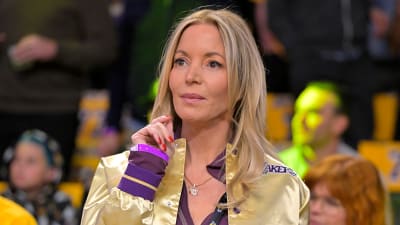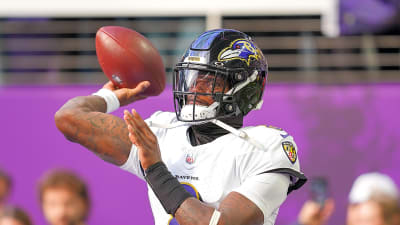Often, the year 1967 is brought up, otherwise known as the last time the Leafs were in a Stanley Cup Final. The decade was truly the last time the Leafs were champions, winning four Stanley Cups in the 1960s. As such, fans of the game will recognize several of the key players from this era, even if it was long ago.
After three Stanley Cups in the late 1950s, the Leafs started strong in the 60s. Collecting three straight championships in the early 60s, the Leafs would hold on for a last hurrah in the fateful 1966–67 season.
This would mark the end of an era for the Leafs, as several key players and figures would move on after their last Stanley Cup. The NHL would change the following season, expanding from six teams to twelve. The Stanley Cup itself would follow suit, changing from a slender version into its current form. The Leafs would see major changes off the ice as well, as ownership, GM, and coach would all change heading into the next decade. With that in mind, let’s take a look back at the Leafs’ all-decade team for the 1960s.
Forwards
Mahovlich—Keon—Armstrong
Pulford—Kelly—Ellis
Shack—Ullman—Bathgate
Duff—Walton—Papin
Extras: Nevin, Stewart, Henderson
An incredible group of top-six forwards powered the Leafs over the decade. Dave Keon and Red Kelly were an awesome one-two punch down the middle. Power forward Frank Mahovlich would join Keon as the Leafs’ primary scorers, while longtime captain George Armstrong would provide strong two-way play alongside Kelly.
Keon won a Calder Trophy in 1960–61, to go along with two Lady Byng Trophies. Kelly would transition from defenceman to centre upon joining the Leafs in 1959–60. What followed were his most productive offensive seasons early in the decade. Both Ron Ellis and Bob Pulford would hold key secondary scoring roles for long stretches, more than earning their spots on this all-decade team.
The rest of this forward lineup needs a bit of imagination. Eddie Shack, known as “the entertainer” or “the clown prince of hockey,” was often more of a complementary player, though his long tenure makes him a lock for this lineup. His huge moustache and affable attitude made him a fan favourite, more than even his solid play did.
Dick Duff was a great Leaf, and Ron Stewart authored a long run as well, though most of their best work came in the 1950s. Andy Bathgate was a short-term Leaf, though he had a great career with the New York Rangers, even winning a Hart Trophy in 1958–59. Norm Ullman, Mike Walton, and Paul Henderson had strong performances for the Leafs in the 60s, though none were part of a championship team. Bob Nevin came in as a rookie the same season as Keon, though he was traded after the team’s first two Stanley Cups of the decade.
Defence
Stanley—Horton
Brewer—Baun
Hillman—Douglas
Extras: Pronovost, Pilote
The Leafs had a great group of defencemen in the 60s, headlined by the famous Tim Horton. Horton would finish in the top five in Norris Trophy voting six times in the decade. Horton would become a star off the ice as well, opening his first donut store in 1964.
Though Horton earns most of the fame and memories, the Leafs had a strong depth to work with on their bluelines. Carl Brewer, Bob Baun, and Allan Stanley all earned some Norris Trophy votes in the 60s, while Larry Hillman was a staple of the Leafs’ back end through the decade. Kent Douglas won a Calder Trophy. Stanley often played alongside Horton, while Baun scored the Stanley Cup-winning goal on a broken leg.
Both Marcel Pronovost and Pierre Pilote had great careers prior to joining the Leafs. Pronovost spent a bit longer with the team, though Pilote won three consecutive Norris Trophies with the Chicago Blackhawks earlier in the decade.
Goalies
Bower
Sawchuk
Gamble
There might be no greater icon of the 60s Leafs than Johnny Bower. Known for his poke check, Bower made his NHL debut at 29 years old for the New York Rangers in 1953–54. After that, Bower would play just seven games before becoming a full-time Leaf in 1958–59. Despite entering the decade in his age-35 season, Bower would backstop the Leafs to three Stanley Cups as a starter. Through the decade, he would add two Vezina trophies as well. He retired at the end of the 1969–70 season as a 45-year-old.
The second goalie spot is a bit harder to decide, though the legendary Terry Sawchuk earns the nod. Sawchuk was the Leafs’ starter for their final Stanley Cup, after all. A Leaf for only three seasons, Sawchuk won a Vezina Trophy of his own with the team, the fourth of his career. Ultimately, Sawchuk will be remembered as a Detroit Red Wing, though his stint with the Leafs was fantastic.
Bruce Gamble is worthy of a shoutout, spending five seasons with the Leafs in the 60s, but Sawchuk’s resume is difficult to live up to.
Takeaways
Granted, so much about the Leafs, the NHL, and the game of hockey has changed since the 60s. Still, absent team success since then, it might be interesting to ruminate on the identity of the last championship Leaf teams. This group was built on defensive prowess first and foremost. The goaltending was strong, and the roster had some high-quality players, but these teams won with a commitment to defending. Their goals against were much better than league average, especially during the early seasons of the decade.
While much of the veteran core would move on after the 1966–67 Stanley Cup victory, it was perhaps the coming changes to ownership that would dismantle the reputation of the once-proud team in the decades to come. From 1927 to 1961, the Leafs were owned by Conn Smythe. His son, Stafford Smythe, would become heavily involved in managing the team, heading a committee to run the hockey operations of the team in 1957. The committee would be known as the Silver Seven, and funnily enough, Stafford Smythe would try to develop more of an offensive style from the Leafs’ system upon taking over. This change in philosophy might have been evident and impactful, particularly as younger players like Dave Keon and Frank Mahovlich would power the team through the 1960s.
The start of the Ballard era
Though both Conn and Stafford Smythe would author off-ice scandals, the business dealings of the 1960s would set the stage for more trouble ahead. Harold Ballard and John Bassett started as members of the Silver Seven before joining forces to become part owners along with Stafford Smythe in 1961. The 60s saw the Leafs’ successes cement the team as an institution on and off the ice, becoming more profitable alongside their championships. This might be best symbolized by the Beatles playing some of their few North American shows at Maple Leafs Gardens in 1964, 1965, and 1966.
Ballard and Smythe would get into legal trouble in 1968. Ballard would serve time in prison, while Smythe died before his trial. As Bassett eventually sold his shares, the stage was set for Ballard to take over the team. For those with a knowledge of Leafs history, the decade of success in the 60s would take a dramatic turn under Ballard, casting a terrible shadow on the team until the 1990s. The Leafs might well have had the worst owner in sports over that period, a huge disadvantage that few professional teams in any sport can overcome.
A decade to remember
To take a bigger picture view of time, it might be said that Stafford Smythe was key in forming the last great era of the Leafs. At times, he reportedly argued with his father and clearly was involved in pulling strings. His decision to shake up thinking in the organization led to younger front office talent getting promoted up the ranks, including eventual GM Jim Gregory. While Conn Smythe was on the record with some racist comments, moreover, a willful decision to be exclusionary, Gregory would be instrumental in making the NHL more inclusive, going on to value support and invest in markets around the world.
The Silver Seven were not perfect, clearly, but for most of the 1960s, the chaotic partnership worked wonders. In some sense, the Silver Seven brought the Leafs into a new frontier, in turn helping Toronto to become the city that it is today.
More must-reads:
- Capitals' Alex Ovechkin starting to heat up with first hat trick of season
- Florida Panthers center Eetu Luostarinen suffers freak injury in 'barbecue accident'
- The '2022 NFL Week 1 starting QBs' quiz
Breaking News
Trending News
Customize Your Newsletter
 +
+
Get the latest news and rumors, customized to your favorite sports and teams. Emailed daily. Always free!








